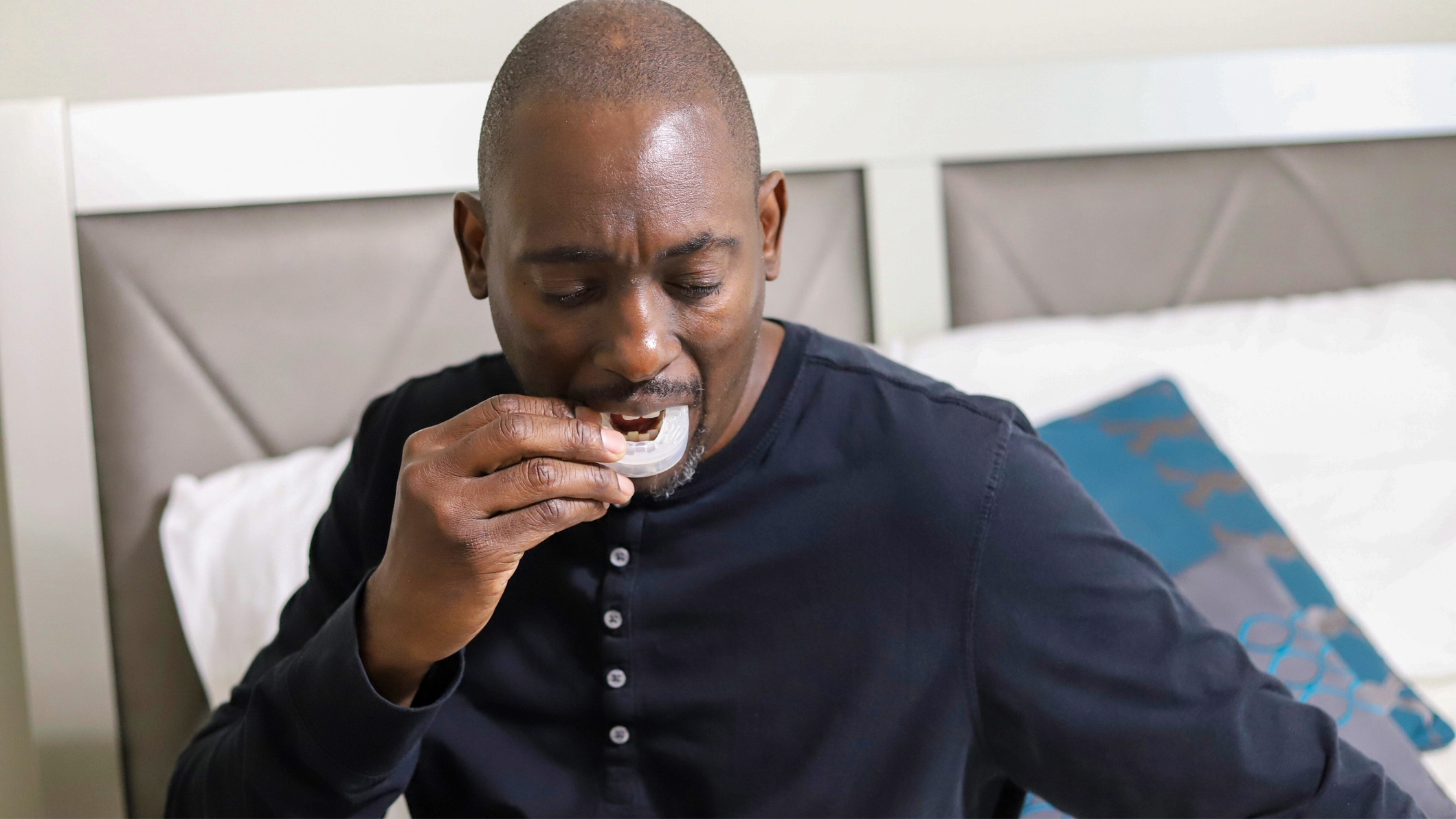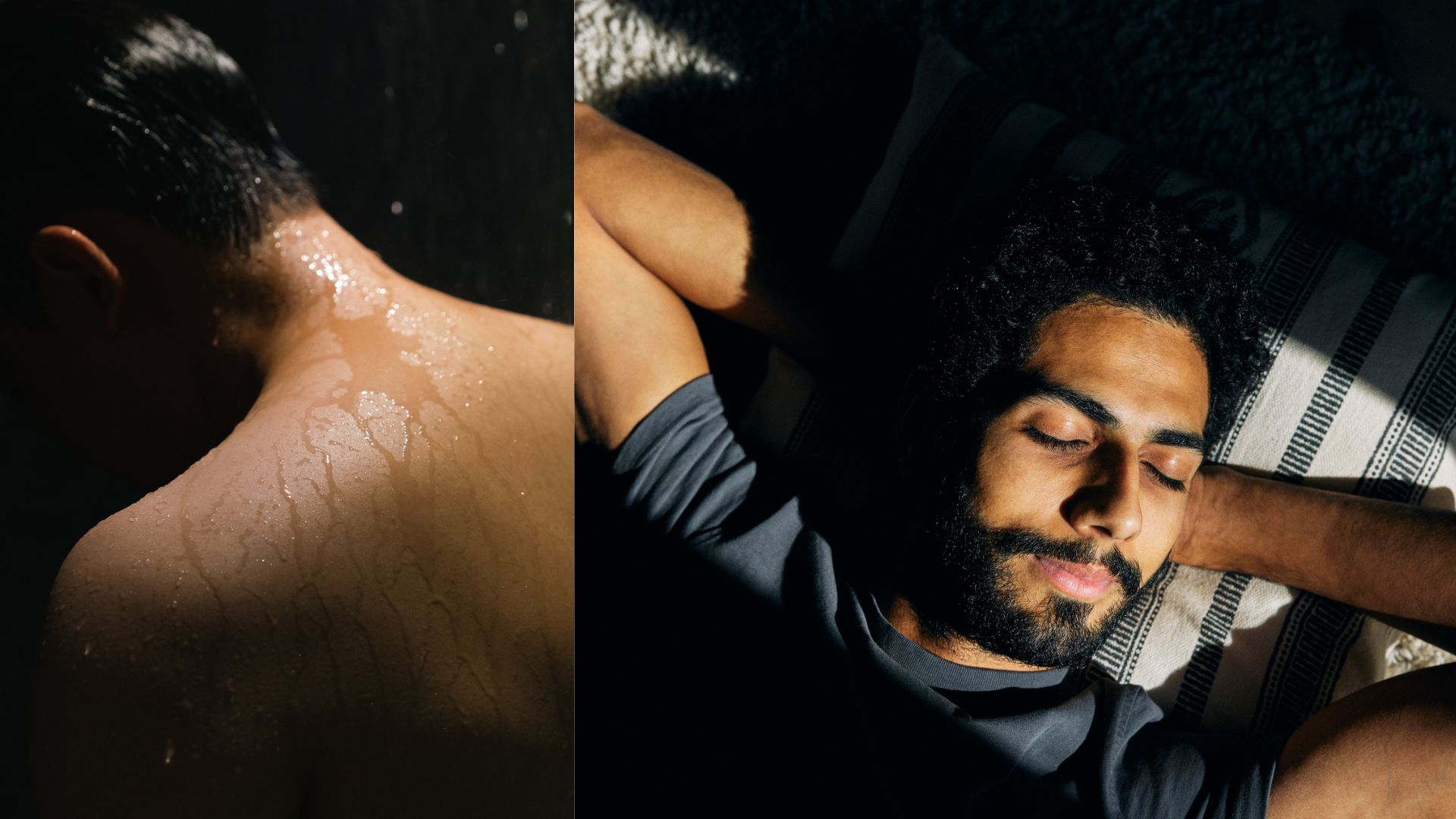Blowing into a conch could be new, accessible treatment for sleep apnea, says research
The ancient ritual was shown to reduce symptoms of the common sleep disorder

An ancient ritual that involves blowing air into a conch shell could be a new method for treating the common sleep condition obstructive sleep apnea, new research has found.
Drawing from the yogic ritual of 'shankh blowing', this method encourages a practitioner to inhale deeply and exhale forcefully into a spiral conch shell.
Research suggests regularly practicing shankh blowing could ease symptoms of mild to moderate sleep apnea, a condition that impact millions of people worldwide and is characterized by disrupted breathing during the night.
Key takeaways from the study
- Those who practiced conch blowing had improved OSA symptoms
- Conch blowing is thought to strengthen the muscles in the airway
- Further research is needed to explore the results
During the study, 16 participants were provided with a traditional shankh (conch shell) and trained to use it properly. The remaining 14 were instructed to follow deep breathing methods.
Both groups were asked to practice for at least 15 minutes, five days a week.
At the end of a six month period, those using the shankh method reported a greater reduction in daytime sleepiness (a common symptom of sleep apnea) compared to those in the control group.
Those in the intervention group also reported better sleep quality and researchers noted an improvement in objective sleep apnea measures, such as oxygen saturation.
Get instant access to breaking news, the hottest reviews, great deals and helpful tips.
Researchers behind the study suggest that shankh blowing provides "respiratory muscle training" that could lessen the impact of OSA from collapsing airways.
"The way the shankh is blown is quite distinctive," Dr. Krishna K Sharma, lead researcher, explained to MedicalXpress.
"This action creates strong vibrations and airflow resistance, which likely strengthens the muscles of the upper airway, including the throat and soft palate — areas that often collapse during sleep in people with OSA."

This isn't the first out-of-the-box approach to sleep apnea treatment that's proven to have viability. A study from 2006 found that frequently practicing the didgeridoo could lessen sleep apnea symptoms in mild to moderate cases.
Researchers similarly theorized that playing the didgeridoo trained the upper airways, decreasing their "collapsibility."
While this new research is certainly intriguing (and eye-catching) the small study requires further research before your doctor is likely to start prescribing a conch shell.
Common methods for treating sleep apnea
With sleep apnea among the most common sleep disorders worldwide, various methods to ease diagnosis and treatment have been developed. Among the most common sleep apnea treatment methods are:
1. CPAP machines
The 'gold standard' of sleep apnea treatment, Continuous Positive Airway Pressure machines (better known as CPAP machines) are masks that fit over the nose and mouth to provide a steady flow of air.
CPAP machines are the most effective form of sleep apnea treatment and are often used to treat moderate to severe cases.
However, the bulky masks do have their disadvantages, as users can find them uncomfortable to sleep with. For that reason, many experts are looking for a solution as effective as CPAP but without the associated discomfort.
2. Mouthguards
Mouthguards for sleep apnea help hold the airway open to improve airflow and reduce sleep apnea incidents.
The most effective mouthguards for treating sleep apnea are typically customized to fit your mouth, although over the counter mouthguards are also available and can be easier to access.

Mouthguards are often considered more comfortable than CPAP machines. However, they aren't suitable for some with dentures and other dental issues.
3. Lifestyle changes
Lifestyle changes are often recommend as a way to address the root cause of sleep apnea, often alongside other forms of treatment.
Those with sleep apnea are advised to quit smoking, while reducing alcohol consumption can also limit the frequency of airway collapse.
Weight loss is another commonly recommended lifestyle change for sleep apnea, as heavier individuals typically have excess tissue in the back of the throat, increasing the risk of the airway becoming blocked in the night.
If you suspect you are experiencing sleep apnea, we suggest speaking to a healthcare professional to develop a treatment plan that works for you.
Follow Tom's Guide on Google News to get our up-to-date news, how-tos, and reviews in your feeds. Make sure to click the Follow button.

Ruth is an experienced Senior Staff writer at Tom’s Guide, covering all things sleep and mattresses. She writes to help people sleep better, from how-tos to the latest deals to mattress reviews, and has interviewed an array of experts who share her passion. She is also our specialist on memory foam — she’s flown around the world to see memory foam being made — and leads our hotel mattress content. She has a deep interest in the link between sleep and health, and has tried enough mattresses, from Helix to Nectar to Simba, to know the right bed really can make a difference to your wellbeing. Before joining the team at Tom’s Guide, Ruth worked as a sleep and mattress writer for our sister website, TechRadar.
You must confirm your public display name before commenting
Please logout and then login again, you will then be prompted to enter your display name.
